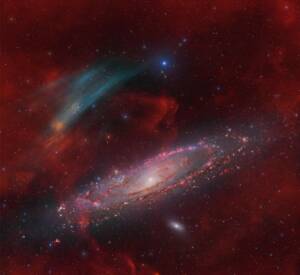
Discovery of the M31 [OIII] emission arc
Recently, a major discovery by an international team of amateur astronomers and scientists has become a huge online hit, and this new discovery is just located in one of the
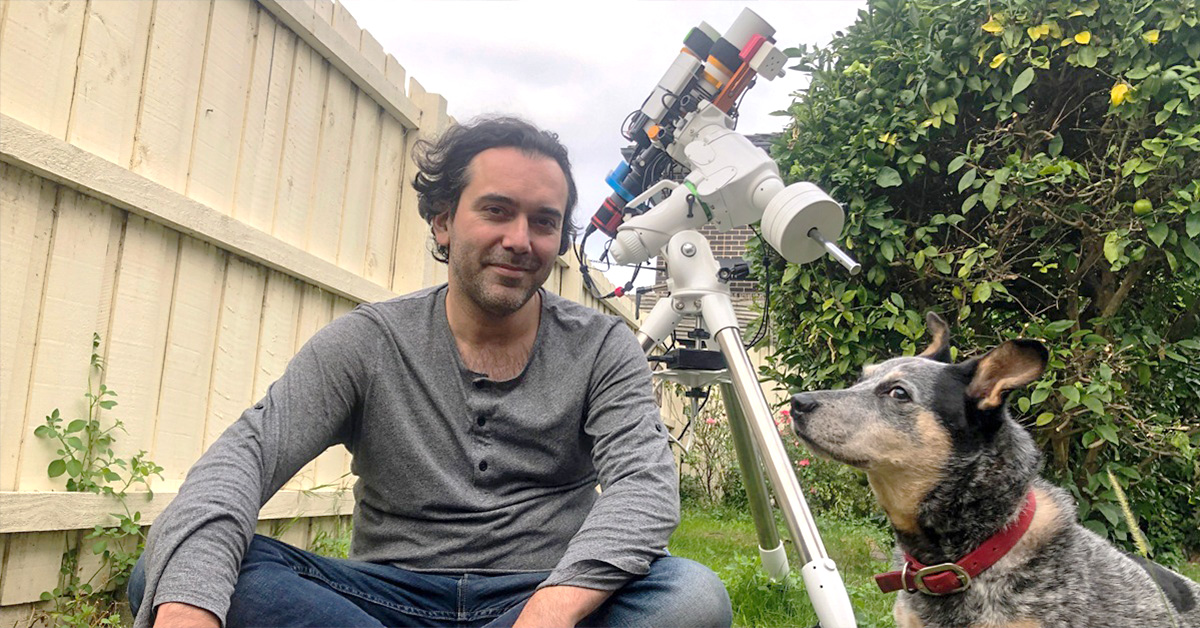
My name is Steeve Body. I’m a 41-year-old music composer, sound designer, sound engineer and educator living in Melbourne, Australia with my beautiful wife Lauren and my 7-year-old son Sebastien. I was born in France and grew up in Reunion Island (near Mauritius and Madagascar) before moving to Australia when I was 20 years old to pursue a career in music.
I’ve been looking at the sky for as long as I can remember. I have always been fascinated by the cosmos and the sky in general. When I was younger, I either wanted to be a pilot or an astronomer and started studying physics at university, got a pilot license before ultimately deciding to follow my passion for music.
I have a deep connection to astronomy and observing the cosmos. I had my first telescope when I was probably 9 years old, and it has been a spiritual journey that connects me to everything else that surrounds me. I feel lucky and privileged to be living in a time where I can even appreciate what that means, to look up, contemplate and wonder.
I took my first picture with my phone about 18 months ago, then had a DSLR for over a year and then finally got myself a ZWO ASI1600MM Pro with a filter wheel 2 months ago now.
It all started about 2 years ago when I bought my wife a small collapsible reflector for her birthday. A few months in, I stuck my phone to the eye piece to see if I could take a picture of the moon, I was hooked instantly!
I love solving problems, so I made it my mission to keep trying up until I got a decent shot with my iPhone… I knew I was in trouble then because I was absolutely addicted to that feeling and this was probably going to hurt my wallet…
Like many other, I started checking out some YouTube videos about astrophotography and found many great channels like Trevor Jones Astrobackyard, Cuiv the Lazy Geek, The Astro imaging channel, Star Stuff with Dylan O’Donnell, Visual Darks amongst others and slowly started to learn the craft and get better.
I also joined my local astronomical society here in Melbourne, the ASV and met some truly great people and amongst them were some world class astrophotographers, so I was beyond excited to learn from them.
The first picture I was truly happy with was my mosaic of the Dragons of Ara about 6 months in with an entry level DSLR that I got second hand on eBay for $200, it was so much better but still hard to deal with the thermal noise…
When looking at the work of other on Astrobin, I knew that getting a mono camera was the path for me to take. I really wanted to take the leap and get an ASI2600MM Pro, but with the cost of the filters and the camera combined this put it out of my reach for my budget, so I decided to go with the ASI1600MM Pro, a trusted camera by many astrophotography’s and in many ways a camera that revolutionized amateur astrophotography at an affordable price point.
It was perfect timing with Orion season in full swing here in the southern hemisphere and I could finally take a shot of the Rosette that I never had the opportunity to take before. I was absolutely blown away when the subs started to come in, right there and then I really understood what I was missing out on when shooting with my DSLR, and I don’t think I could ever go back now.
This is the gear I currently have:
Imaging scope: William Optics Zenithstar 73 APO
Guide Scope: William Optics 200mm Uniguide scope
Mount: Skywatcher EQ6-R
Guide Camera: ZWO ASI120MM Mini
Imaging Camera: ZWO ASI1600MM Pro
Filter Wheel: ZWO 8 x 1.25” EFW
Pegasus Astro Falcon Rotator
Pegasus Astro Pocket Powerbox Micro
Antlia 3nm Pro filters Ha, Oiii and Sii, and Antlia Pro LRGB filters
Intel NUC 8th Running Nina, Pixinsight and EQ Mod
It was so stunning when I got the message from ZWO that I won that week! This was my first time attempting this target and it was such an amazing feeling to get some recognition for it. My first capture and process of this target, I took about 12h worth of exposures, stacked them in Astro Pixel Processor and processed the picture in Pixinsight and photoshop. It is such a wonderful target but difficult to process well as it is quite faint, and you need a lot of exposure time to be able to do this one justice from my bortle 6/7 skies and manage your signal to noise ratio.
Since then, I ended up adding another 21h worth a data for a total of 33h and spent some more time processing it to resolve finer details and get better looking stars.

Well, capturing and processing are two completely different things. On one end you have been capturing where everything is out to get you, your seeing, sky pollution, guiding performance, flexture, focus, back focus, flat field, dew, full moon, wind, sudden weather change, technical issues of all sorts… it is a never-ending story… On the other end you have image processing which has a steep learning curve. You may be great at capturing but that does not mean your picture will be great unless you are skilled at processing. I think processing is probably the most challenging to get right in the long run and it is so easy to overdo.
I have been a sound engineer and mixer for over 20 years, and I think it is very similar to astrophotography in many ways with recording (capturing) and mixing (processing). I fundamentally understand the concepts and I believe this allows me to absorb a lot of information and fast track my learning progression. Being completely obsessive compulsive and spending countless hours and days practicing also helps a lot! I still have a long way to go but I’m really enjoying the process and the journey so far.
I mostly take pictures in my light polluted bortle 6/7 suburban night skies in Melbourne. I am looking forward to spending some more time shooting in dark locations to be able to capture reflection and dark nebulas which I can’t really take where I am.
My local astronomical society is an amazing dark site with some great facilities for its members, so I’m probably going to spend some more time there in the near future.
Aside from that, we have a lot of animals roaming around at night in Australia and I have had my guiding disrupted by possums on many occasions! Thankfully, my dog Tyke keeps them at bay… but he got very close to peeing on the telescope the other night so I’m not too sure what’s better!
I just love watching the pictures come in when live stacking during acquisition session and slowly building a color image, especially when it is my first time imaging a target. This really gets me excited and gives me an idea as to what to expect during processing, it just doesn’t get old and I love it!
Q9: Did you have a teacher, or did you just learn everything by yourself when you started astrophotography?
My teacher number 1: YouTube! Mostly all these amazing people who dedicate so much of their time to the hobby and share their knowledge with all of us, it is amazing.
Astrobin is also such a great place with so many knowledgeable people who are willing to give you feedback and advice. I highly recommend it.
I have mentioned this earlier but there are quite a few amazing imagers in my astronomical society, the ASV in Melbourne. Some of them are highly regarded at an international level. This truly inspires me to become better at the craft. I’m looking forward to hanging out with them more in person and learning from them directly. With lockdowns and COVID, it has been hard to do so, but I’m sure this will change soon.
Start small and slowly build up your skills if you want to do astrophotography. Forget about the long focal length when you start imaging! The worst thing you can do is to start with an SCT (unless all you want to do is image planets and nothing else). It is very hard to get that kind of focal length to work well with guiding unless you spend a LOT of money of an amazing mount AND have developed great skills. That takes time, you must be patient. Don’t go spend a ridiculous amount of money right away on equipment and expect that to make you a great astrophotographer, you will be disappointed very quickly and it might get you out of the hobby in a heartbeat once you actually realize how hard it is to be truly great at this.
Start with a DSLR, get some Milky Way shots, learn how to polar align and read the skies. Milky way shots are hard to beat and accessible to most. You probably already have a DSLR right now, so go for a camping trip to a dark site, point your camera at the sky, put it on the ground, take a 20s exposure, take 10 of those and learn how to stack those pictures, you will be amazed at what you will see. Now get yourself a star tracker and start taking 60s exposures, take 100 of them, stack them and see how better your pictures are getting.
Then once you are comfortable with that, move on to a small refractor telescope like the one I have now, the WO ZS 73, or a small triplet like a SW Esprit 80mm or for wide field a WO Redcat with a cooled OSC camera and some good LP filters and most importantly, a good mount. Learn about guiding a get a small guide scope and an ASIAIR to help you automate everything easily.
When you decide to get a mount, don’t go cheap, it will be your most important investment and there are no two ways about this, you must invest in a good mount. The EQ6R is just a great performer and will do you well for many setups in the future. If weight and portability are concerns, the latest ZWO AM5 looks amazing for a lightweight high-performance mount.
You want to invest in a cooled camera to manage noise as soon as possible too. I went directly from a dslr to mono, and I do not regret that move one bit! People say it takes longer to process and get around mono than OSC. I disagree personally.
Then get good at processing. Photoshop is a MUST have. I also highly recommend Astro Pixel Processor for stacking. Once you get good at these two, I highly recommend you get into Pixinsight, beware it is not the most intuitive software though, so be prepared for the learning curve, watch YouTube tutorial from Visible Darks great channel and build up your skills. It has some amazing tools and the more I use it, the more I realize how powerful of a tool it is. Having complementary skills in Pixinsight and Photoshop is really where you want to be, they are both great at different things. I often start in Pixinsight and finish in photoshop.
Yes, my son has his own telescope as well as my wife and they do join me to star parties. Most of the time when I’m imaging from the backyard however it is just me.
The ASI1600MM Pro and the ASI120MM Mini are my work horse. I love them both and they have been super reliable. The ASI2600MM Pro and ASI6200MM Pro are my dream cameras. I hope I get one of them some day.
I’m going to keep on building my skills on classic targets like the Dragons of Ara, Carina, M8, Triffid, the Eagles Nebula, a few star clusters and maybe start capturing some reflection and dark nebulas if I can manage to go to a dark site more often.
I also want to acquire another refractor with a longer focal length around 800mm this year hopefully and open some more targets such as larger galaxies and smaller nebulas. I also want to start doing multi focal length acquisition on targets to increase resolution. I’m currently working on a big mosaic project of the Vela Supernova remnant… I wish I had an even wider field setup, but instead, I’m currently building a 9-panel mosaic with what I’ve got which is most certainly going to be a lot of work, I think!
I think ZWO allowed a lot of amateur astrophotographers to have access to a quality of equipment and performance that was not available to most during the CCD only era. CMOS cameras and their relatively affordable price point made that possible and ZWO played a big part of that in my opinion.
Just keep on doing what you are doing, keep on innovating and getting involved with the community. The ASIWEEK competition is such a good initiative and benefits everyone involved. Again, I appreciate all your support and encouragement and I’m looking forward to posting some more pictures as I capture and process them. All the best to the ZWO team. 😊

Recently, a major discovery by an international team of amateur astronomers and scientists has become a huge online hit, and this new discovery is just located in one of the
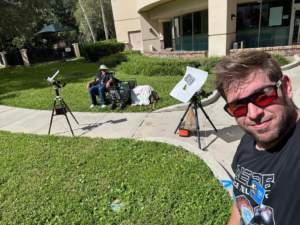
That 11-year-old boy staring at Horsehead Nebula photo would never have imagined… Decades later, he’d be capturing amazing deep-sky images from his Florida backyard! “ It was amazing to see

Hello,Sara Harvey,thanks for accepting our interview invitation. Congratulations on winning the ASIWEEK competition in week! Q1: At first, congratulation that your nice image won #ASIWEEK. Can you introduce yourself to
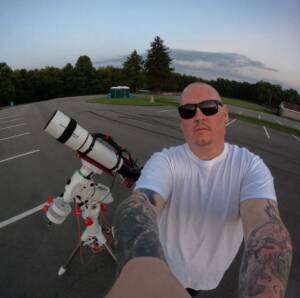
Astrophotography is more than just capturing images of the night sky—it’s a journey of discovery, patience, and creativity. For this passionate astrophotographer, what started as a chance encounter with a
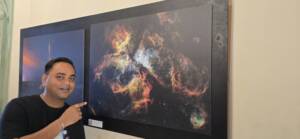
Taranjot Singh, an Indian origin Australian astrophotographer who is making waves on the international stage. Taranjot has been recognized as one of the Top 5 finalists in the prestigious Siena
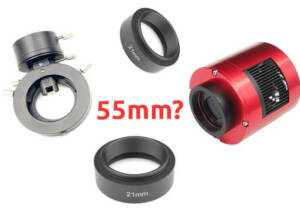
The back focal length is advised by telescope manufacturers. Since most telescopes have a 55mm back focal length, we are here to provide detailed instructions for all ASI cooled cameras.Please